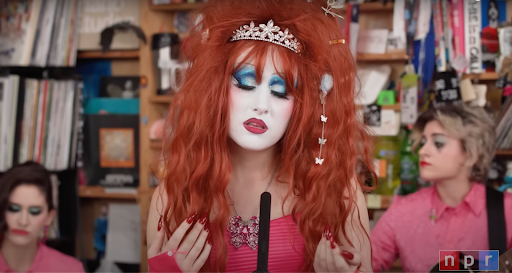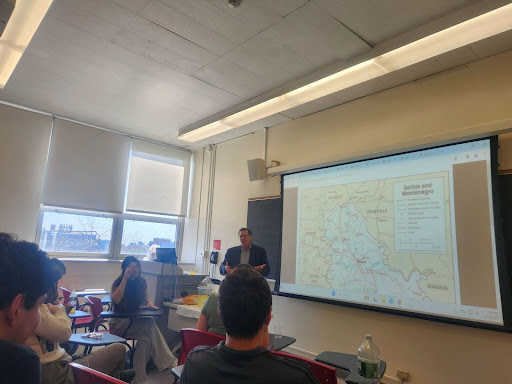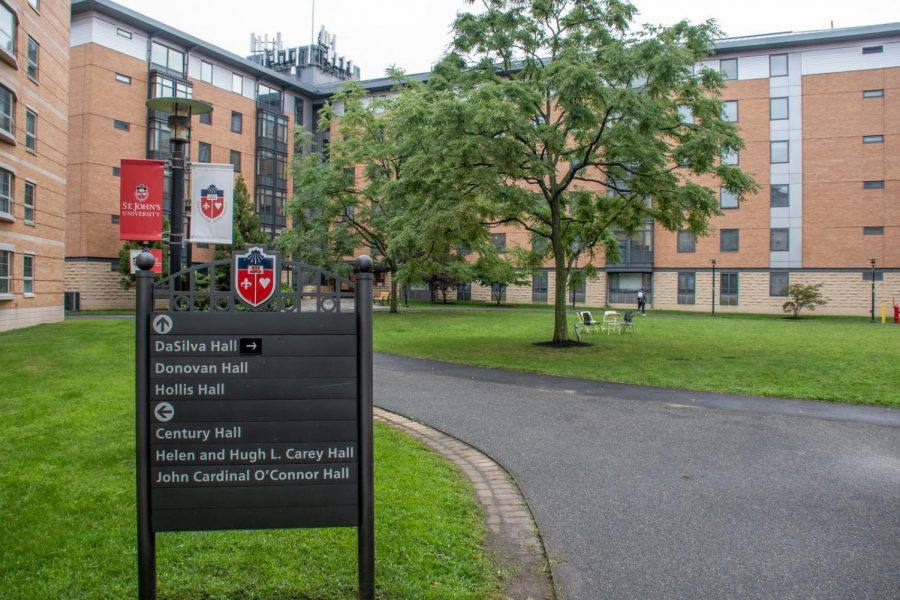A national campaign honoring women who have survived violence is being held on the Queens campus.
The Clothesline Project (CLP), which will be displayed on the Great Lawn, allows women who have suffered from violence or know anyone who has suffered, to design shirts in order to raise awareness and to promote healing.
The shirts will be hung on a clothesline from 11:00 a.m. to 2:30 p.m. from April 15-17.
“I was familiar with the Clothesline Project, and thought it was a way to have the campus community think and talk about the violence that exists against women and girls in a way that is educational and also interactive and helpful as part of the healing process,” said sociology and anthropology professor Judith Ryder, who was instrumental in getting the project on the Queens campus.
“The Clothesline Project provides an avenue for people to talk about a difficult and stigmatizing subject through art,” she explained.
CLP began in 1990, when 31 shirts were displayed in Hyannis, Massachusetts, part of “Take Back the Night,” an annual march and rally aimed at combating violence against women.
CLP was then featured in Ms Magazine. After that, it was featured in more magazines, including USA Weekend and Shape. Now, there are more than 500 projects around the country, and between 50,000-60,000 shirts have been designed.
According to the official CLP Web site, visual artist Rachel Carey-Harper started the clothesline because she was inspired by the AIDS quilt.
“Coming out of the dark about being mistreated isn’t just about personal liberation if someone chooses to design [or] make a T-shirt, but the symbolism of the clothesline is key,” said Kendra Chiu, a senior at St. John’s, and the president of sociology honor society Alpha Kappa Delta.
She said that the amount of shirts hanging on the clothesline symbolizes how often violence against women occurs.
Chiu said that the clothesline “can get the attention of those who were previously oblivious to it.” She added, “Attention turns into consciousness, and consciousness into change.”
The three-day event kicked off with a lecture during Common Hour in St. John’s Hall on April 15 entitled “Rolling Up Our Sleeves: Doing What It Takes to End Violence Against Women and Girls.”
In fact, a group of close to 130 students, faculty, and staff members packed into Room 210 to listen to Dr. Robin Robinson, a sociology and anthropology professor at the University of Massachusetts at Dartmouth.
Before Robinson spoke, Professor Ryder explained more about the use of a clothesline. She said that laundry was usually a woman’s work and that it gave women the time to chat with each other.
“Women also whispered stories of violence,” she said. “Women found comfort in the empathy of others” while doing their laundry, she added.
She noted that the CLP “has a visual impact that can move us.”
Dr. Robinson then addressed the audience, sharing five stories about women who suffered violence in different ways.
One of the stories, which she called “Shelly’s Leather Jacket,” was about a 17-year-old girl that Robinson had met a few years ago when she was applying for a job. The girl, Shelly, was committed to youth corrections.
Robinson said that Shelly asked for her sentence to be extended until she was 21 because she had an abusive boyfriend who was 10 years older than her, and she felt safe in the correctional facility.
Robinson said that Shelly wore a heavy leather jacket zipped up to her neck. Robinson asked her why she wore it all the time, and Shelly then took the jacket off, showing Robinson bruises on her arms, neck, and upper chest. Shelly told Robinson that she would not leave her boyfriend because she was afraid he would kill her.
After telling the stories, Robinson said that “at least one in three women around the world is beaten, coerced into sex, or otherwise abused.”
She said that there needs to be awareness in order for this violence to be prevented.
“Roll up your sleeves, do what needs to be done to end violence against women and girls,” she said.















